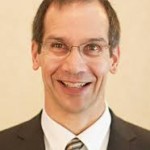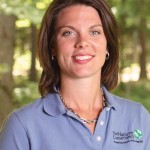Evaluating the 4R Nutrient Stewardship Concept and Certification Program in the Western Lake Erie Basin
Since the mid-1990s, the frequency and extent of algal blooms and loadings of dissolved phosphorus (P) in the Western Lake Erie Basin (WLEB) have been on increasing trends. Agricultural crop management has been identified as a primary source of P to the Lake. Educational programs directed at growers and nutrient service providers (e.g., agricultural retailers, crop advisers) have emphasized principles of 4R Nutrient Stewardship and the 4R Nutrient Stewardship Certification Program for nutrient service providers.
In October 2016, the Journal of Great Lakes Research published Building partnership to scale up conservation: 4R Nutrient Stewardship Certification Program in the Lake Erie watershed, documenting water quality issues in the Western Lake Erie Basin and the 4R Nutrient Stewardship Certification Program initiative, utilizing the 4Rs framework.
The overall goal of the 4R Research Fund is to evaluate the specific impacts of the adoption of practices associated with 4R Nutrient Stewardship, and the impact of the 4R Nutrient Stewardship Certification Program itself, on crop productivity and profitability, water quality, and perceptions of growers, nutrient service providers. This multidisciplinary approach involves monitoring, modeling, and measurement of the impacts at the field, watershed, and lake scales.

The 4R Research Fund was established by the fertilizer industry to help establish sustainability indicators and environmental impact data for implementation of 4R nutrient stewardship across North America. It provides needed resource support with a focus on measuring and documenting the economic, social and environmental impacts of 4R nutrient stewardship. This effort will help expand the 4Rs beyond being solely an industry effort and towards becoming a viable strategy embraced by other important stakeholders to address cropping system productivity and concerns for nutrient losses into the environment. For further information on 4R Nutrient Stewardship, click here.
Funds for the 4R research effort were initially derived from within the fertilizer industry. Specifically, The Fertilizer Institute (TFI) and the Canadian Fertilizer Institute (CFI) have obtained support from their members. Since creation of the 4R Research Fund, additional agricultural stakeholders have contributed to the effort.
The 4R Research Fund has been established within the Foundation for Agronomic Research (FAR). FAR is a non-profit 501(c)(3) research and education foundation established in 1980 by the Board of Directors of the Potash and Phosphate Institute. Today it is managed by the International Plant Nutrition Institute (IPNI).
A 4R Fund Management Committee provides oversight of the 4R Research Fund and includes representation from IPNI, TFI and CFI as well as agricultural industry members to ensure that industry priorities are maintained and a consistent 4R approach is executed. A Technical Advisory Group is working to determine research needs and funding areas and is providing input and support to the Fund Management Committee. The Technical Advisory group includes representatives from industry, academic and government agency experts in agronomy, environmental sciences, sustainability, government relations and communications.
Principal Investigator
Kevin King
USDA-ARS
Columbus, OH
Oversight for organization, budgeting, execution, reporting, and communication and co-lead the edge of field research in Ohio.
Co-Principal Investigators
Tom Bruulsema
International Plant Nutrition Institute
Guelph, Ontario, Canada
Review research related to nutrient service providers and assist in interpreting how the data impacts the 4R Certification Program.
Rem Confessor
Heidelberg University
Tiffin, OH
Co-lead the linked modeling framework to scale up the benefits of various levels of 4R implementation focusing on the Soil and Water Assessment Tool (SWAT) modeling portion.
Joe DePinto
LimnoTech
Ann Arbor, MI
Co-lead the linked modeling framework to scale up the benefits of various levels of 4R implementation focusing on the Western Lake Erie Ecosystem Model (WLEEM) modeling portion.
Laura Johnson
Heidelberg University
Tiffin, OH
Watershed scale data collection and analysis from the control and treatment watersheds in Ohio and also have responsibility for leading the biotic integrity research.
Greg LaBarge
Ohio State University Extension
Marion, OH
Co-lead the surveys of growers and nutrient service providers to evaluate the decision making process with ongoing 4R Certification efforts and adoption.
Todd Redder
LimnoTech
Ann Arbor, MI
Co-lead the linked modeling framework to scale up the benefits of various levels of 4R implementation focusing on the Western Lake Erie Ecosystem Model (WLEEM) modeling portion.
Brian Roe
Ohio State University
Columbus, OH
Co-lead the surveys of growers and nutrient service providers to evaluate the decision making process with ongoing 4R Certification efforts and adoption.
Doug Smith
USDA-ARS
Temple, TX
Lead the edge of field research on rate, time and placement of phosphorus and watershed research in Cedar Creek watershed in Indiana.
Carrie Vollmer-Sanders
The Nature Conservancy
Angola, IN
Integrate the information and identify and develop educational and outreach materials for the continued assessment and advancement of the 4R Certification Program.
Mark Williams
USDA-ARS
Columbus, OH
Co-lead the edge of field research on rate, time and placement of phosphorus in Ohio.
Robyn Wilson
Ohio State University
Columbus, OH
Co-lead the surveys of growers and nutrient service providers to evaluate the decision making process with ongoing 4R Certification efforts and adoption.
















